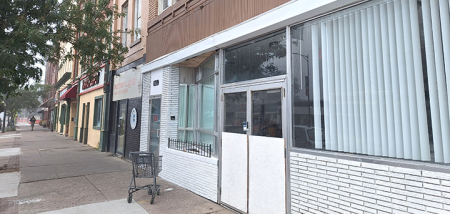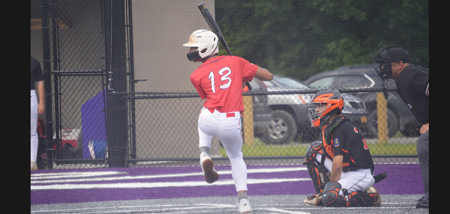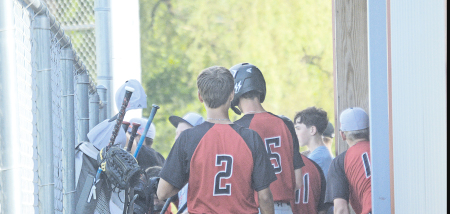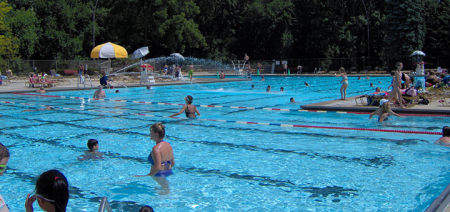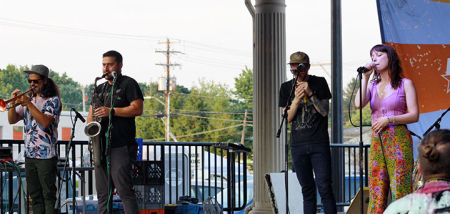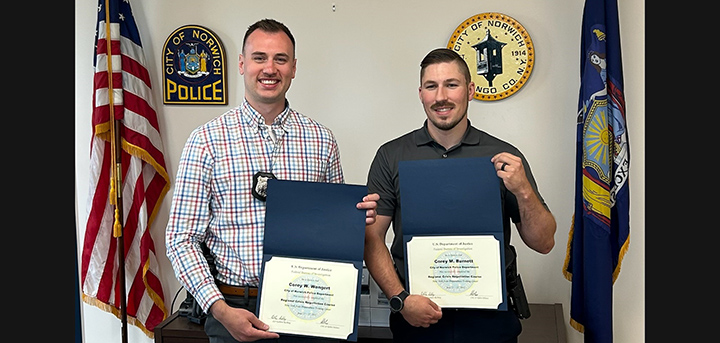Veterans Recall Horrors Of War On D-Day
Published:
November 10th, 2017
By:
Tyler Murphy
The following is an article originally published by the Altamont Enterprise;Albany County Post, in June of 2013, shortly before D-Day. The story is about veterans of World War II sharing war experiences at an informal gathering in the Village of Altamont, in Albany County, where they were also joined by a reporter. The Evening Sun thanks the Altamont Enterprise for sharing this feature.
NEW SCOTLAND — Despite uncertain weather reports and choppy seas, the world’s largest amphibious invasion was to land in Nazis occupied Normandy, France, at just after 6 a.m. on June 6, 1944.
Known by the operation’s code word, D-Day became a defining moment of World War II and involved the mobilization of nearly 160,000 Allied servicemen, about 13,000 aircraft, and 5,000 ships.
By the next morning, June 7, 1944, the Allies successfully took the first steps in securing the beaches but almost 9,000 soldiers were killed or wounded.
Landing on Omaha Beach
As a United States Army Forward Observer with the 1st infantry’s 62nd Armored Field Artillery Battalion, Harold E. Williams was on the frontlines of the landing that day.
Enlisting after the attack on Pearl Harbor, Williams fought the Axis forces in Tunisia Africa, then took part in the amphibious landing and liberation of Sicily, before being sent to England for the Normandy invasion.
The events of D-Day, Williams said, he would never forget, and he still struggles against the emotion the memories provoke when discussing them today.
“Carnage, it was carnage. I couldn't describe it to you — I don't think I could,” said Williams in June 2013, at a gathering at the Home Front Café in Altamont, New York.
Williams was one of several World War II D-Day veterans who attended an informal breakfast and discussion at the café, where the servicemen, over cups of coffee, swapped stories and shared their experiences with curious onlookers.
“The night before we left, they told us we were going, we didn’t know where, and they handed us pamphlets that said, ‘The eyes of the world are upon us,” recalled Williams.
Williams approached the Normandy beach, known by military planners as Omaha, aboard an amphibious armored transport vehicle called a Rhino. The Rhino is designed to submerge deep into the water with the top, flat part of the vehicle being nearly even with ocean’s waterline.
Jeeps, heavy weapons and other combat equipment were transported to the beaches on top of the Rhino. Williams rode with M-7s, self-propelled 105 millimeter Howitzers, which would be used to support landing troops.
Williams remembers waves from the rough seas that morning often crashed across the Rhino, so men had to get on top of the loaded artillery equipment to avoid getting swept away.
Before he could get ashore, however, commanders ordered his unit to withdraw from the beach because approaching vehicles were being heavily targeted and their presence on the shore was attracting too much enemy fire at their landing site.
From his Rhino, Williams witnessed some of the initial frontline fighting at Omaha Beach.
“The first wave, those poor guys were just torn apart,” said Williams, who was now preparing himself to land on the beach with another wave of soldiers.
Like many veterans at the café that day, Williams found speaking about combat difficult, both because of the emotional toll it takes and because the details are too obscene and gory for most listeners.
“You never tell them the gory stuff but that's the way it was and what we did,” he said.
He spoke of men being gunned down and blown apart as they frantically swarmed across the beach. Upon landing on the shore, Williams was one of those ordered out in front of the Rhino. He and other infantryman had to clear a path for the vehicle to get up on the beach and deploy its ramp.
“We jumped out and had to move the bodies so we could get our ramp down and our big guns on the beach,” he recalled.
Nearby an infantryman’s unit had been devastated by machine gun fire. A lone solider lay on the ground mortally wounded and bleeding badly with major organs exposed. Williams and his commanding officer knelt by him.
“The colonel said ‘Hey kid, we’re going to get you some morphine.’ He said ‘let me go, all my friends are gone,’” remembered Williams. The solider died moments later.
Williams greatly admired his commander, Lt. Colonel Donald V. Bennett, who would retire in 1974 as a four-star general.
“I tell you, that man is a brave man,” said Williams. “I’ll tell you something else I saw I’ll never forget. There was this private hung up on the beach, there was firing all over and this kid was trying to get down and dig in the sand. He was a sitting duck out there. The colonel was running all up and down the beach,trying to keep us moving and he sees this kid — he [the colonel) is nearly a kid himself like most of us, probably 20, 21 years old. He runs over to the kid, grabs him, and yells, ‘Son, I need you.’”
Williams would always remember Bennett for his actions on D-Day and throughout the war. Later in life, he would travel to West Point so his son could meet him. General Bennett died in 2005.
After fighting on the beach, Williams would go on to fight in France’s patchwork of fields divided by stonewalls, berms, and bushes, known as the hedgerows. He remembered discarding his carbine rifle and picking up a better-designed M-1 rifle off the body of a fallen solider.
“Carbines didn’t travel as well,” he said.
Seven weeks after D-Day, Williams also took part in Operation Cobra, in which Allied squadrons accidentally bombarded friendly troops, killing around 150 soldiers including General Lesley James McNair, who was hiding in his fox hole.
Despite a subsequent successful attack by Allied soldiers, Williams said, “It devastated morale.”
Crossing the channel
Navy veteran Ralph P. Avery recalled a chilling scene he witnesses at Normandy on D-Day.
A gunner’s mate on a landing ship tank, a large transport ship, he recalled watching 29 amphibious American tanks accidentally sink within moments of being released into the water from the hull of a bigger vessel.
“They were swamped. We actually saw them sink,” said Avery.
“Before we all headed out, they actually told us, if we stopped to pick guys up in the water, we’d be shot. They had to keep everything moving to the beach; you just can’t stop. Let me tell you, when you see men in the water crying out for help and you can’t stop, it tears your guts out,” he said, pausing briefly before adding, “That’s war.”
Avery’s ship made countless crossings in the following hours and weeks after D-Day, bringing supplies and troops to the France.
“We brought tanks, gasoline, materials, anything they needed from across the channel, also troops,” said another landing ship tank crewmen Art Hamilton. Hamilton said sailors had another name for the bulky, LST transport ships,
“Large, slow target,” he said.
On D-Day, Hamilton’s ship, the LST-980, was struck four times by enemy planes. One of the bombs pierced the hull of the ship, killing crewmen but didn’t explode because it was a dud.
“They told us we didn’t have to worry much about planes,” recalled Hamilton as his crew prepared for the invasion.
William James, a member of the 298th Port Company of the 518th Battalion, recalled almost every ship taking part in the invasion had large balloons tied to the bow and stern with about 200 feet of cable to protect them from dive bombers.
“Everywhere you looked, any direction, an ocean full of ships,” he said.
A few days after D-Day, James’s unit dug foxholes and established a base near the beach where they would unload ships daily. During this time, enemy planes bombarded his unit on two occasions.
James also recalls military engineers intentionally scuttling several ships near the beach, forming a makeshift dock and deep-water birth for larger ships to drop off supplies.
Corporal Tom Spierto served with the 3rd Armor Division as part of the 991 Field Artillery Battalion. His unit also fought on D-Day, firing hundreds of artillery rounds at enemy positions as infantry units advanced.
Later in the fall, Spierto would find himself in combat in Mons, Belgium. He and two other soldiers, traveling in a jeep mounted with a .50 caliber machine gun, ran into more than 50 German troops along the road.
Driving the Jeep as they neared the German infantry, Spierto recalled the soldier manning the machine gun yelled something terrifying, “Jam!” The gun would not load or fire.
Spierto leapt from the driver’s seat and aimed the gun at the approaching German soldiers anyway, faking a cocking motion with the weapon as he did.
“Did you know the German soldier had already fought six years of war,” he said, recalling the moment. “We didn’t capture them, they surrendered.”
As his unit got closer to the German border late in the war, Spierto recalls several occasions where large numbers of enemy soldiers surrendered.
A persecuted world
If the capture of 50 German soldiers by three American infantrymen was one of the more fortunate moments of the war for Spierto, the worst was on April 12, 1945, when the 104th infantry liberated the concentration camp of Nordhausen.
He was among the first to enter the camp and discovered more than 3,000 male corpses piled throughout. Spierto recalls that many of the surviving inmates were so weak they lay helplessly mixed in with the dying, dead, and decaying bodies.
“None, what so ever, knew what was going on,” said Spierto of the regular servicemen, “You had no idea of what the camps where till you saw one.”
“They were a bunch of really skinny guys and kids basically. They kept the women separate at other camps,” he said. “[They looked] like skin on bone.”
Even after Allied troops found the camp Spierto said countless victims continued to die, even as the Allies sought to feed and treat them.
Williams recalled an experience at the end of the war as his unit approached a rural farm, traveling along a river to rendezvous with Russian forces.
“I was baffled at the time but now I understand,” said Williams. As his unit neared the small farm, the soldiers could see civilians peering out at them from the windows.
“There was a batch of people looking out the windows when this old guy runs out. He asked ‘Are you Americans? Are you here to stay,’” said Williams.
A few moments later, the man appeared with a woman and two little children, one of them a girl that was a few years old.
“The man said she had never been outside before. They knew, if the German found out they were hiding Jews, they’d kill them all. So they were hiding up in the farmer’s attic for the entire war,” said Williams.
Williams also recalled his unit finding the remnants of war atrocities, such as burned out homes with bodies piled inside of them.
“The Germans would force everyone, the Jews, into a house, board it up, dig a trench around it and soak it in gasoline and light it on fire. They’d shoot anyone who came out,” said Williams.
“You hear about the people suffering during the war but we didn’t really have any idea until much later,” he said.
“There was just so much persecution in the world,” said Williams, “It was a war for freedom, paid at a high price. People shouldn't forget that; they should remember it.”
Survivors of D-Day: World War II veterans, top, Bill Warren, Art Hamilton, Ralph Avery, Harold Williams, and, bottom, Bill James, Don Latimer, Tom Spierto and John Brimdisi, are all servicemen who witnessed the largest amphibious land invasion of all time on June 6, 1944, when they, along with 160,000 other Allied soldiers, stormed the beaches of Normandy, France. The men gathered in Altamonte in 2013 to share experiences. (Tyler Murphy photo)
Author: Tyler Murphy - More From This Author
Comments
